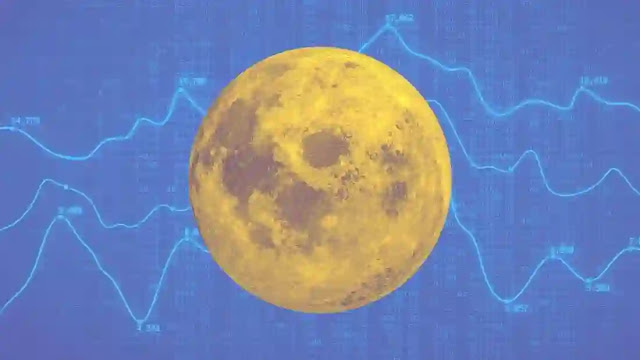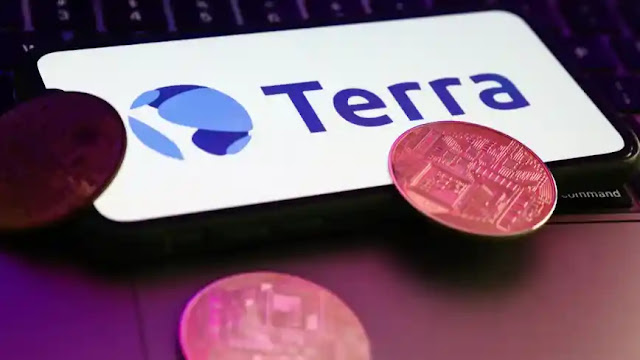Terra Luna 2.0 How backers of the project want to revive the failed cryptocurrency

After a spectacular crash, Terra is receiving a new breath of life with the Luna rebirth. But what will a revival of the failed cryptocurrency look like?
Backers of Terra voted to revive the failed cryptocurrency - but it will not be the same as it once was. The plan is to bring Luna back without the element that caused the crushing fall of the cryptocurrency two weeks ago - its stable coin, UST.
“Terra 2.0 is coming,” the company wrote on Twitter on Wednesday.
“With overwhelming support, the Terra ecosystem has voted to pass Proposal 1623, calling for the genesis of a new blockchain and the preservation of our community.”
What will the new Terra look like?
According to Terra, Terra 2.0 will “effectively create a new Terra chain without the algorithmic stable coin.”
“The old chain will be called Terra Classic (token: $LUNC), and the new chain will be called Terra (token: $LUNA). The chain upgrade will commence a few hours after the Launch snapshot,” Terra announced on Twitter.
The new Terra, set to launch on May 27, will effectively create a new blockchain associated with the Luna token. The old Luna will be replaced by Luna 2.0, completely severing ties with the failed stable coin.
But the old Luna will not disappear completely, it will simply co-exist with the new and improved Luna 2.0. Holders of the old Luna, now renamed Classic, and UST will be given part of the 1 billion new tokens.
Luna holders will receive about 35 per cent of all new tokens, 10 per cent will go to those who held UST before the collapse of the cryptocurrency, 25 per cent will go to traders who still own Luna and UST after the crash and 30 per cent will go to a pool of Luna investors.
Terra will become a completely community-owned chain.
Is this going to work?
After the massive Luna crash, the cryptocurrency market was deeply shaken by the loss of $60 billion. And yet, it appears investors are intrigued by the Luna rebirth. Luna surged more than 20 per cent on Wednesday after Terra’s announcement, according to data by Coin Gecko. Even UST was up over 50 per cent.
Getting rid of the stable coin that made Luna crash in the first place could increase the possibility of the new crypto being successful, but anything goes in this volatile crypto market.
Luna Crypto Crash: How UST Broke and What's Next for Terra

What's happening
Why it matters
What's next
The cryptocurrency market is brutal right now: Look in any direction and you'll see red charts. Bitcoin has ended up in the red for eight consecutive weeks, a record for the cryptocurrency, and ether is at its lower point since 2020. While it's painful for crypto investors, this dive isn't entirely unprecedented. Cryptocurrencies are infamous for their volatility, and tempestuous economic conditions are bringing down not just crypto, but the stock market too.
What is unprecedented, however, is the collapse of the Luna cryptocurrency and its associated terra USD stable coin, aka UST. You may not have heard of UST before, or know what a stable coin is, but it's a big deal. Billions of dollars in crypto wealth have been vaporized, sending shockwaves throughout the whole market.
There are two intertwined stories here: That of the UST stable coin and that of Luna, both of which are part of the Terra blockchain. The UST coin is designed to retain a value of $1 at all times, but it was DE pegged on May 9, and has since fallen to just 7 cents. Then there's Luna, the centerpiece of Terra's ecosystem. Its value has collapsed in one of the most stunning crypto crashes ever recorded.
The coin's price fell from $116 in April to a fraction of a penny at the time of writing. Such an implosion has been seen in small-cap meme coins in the past, but never for something the size of Luna, which had a market cap of over $40 billion just last month.
"This is historic for the crypto markets," said Mike Boroughs, co-founder of crypto investments firm Fortis Digital. "This is a defining moment for the space due to its size and impact in terms of the amount of people that lost substantial value."
The Terra saga has bigger implications than the lost billions. It's brought up questions about similar tokens namely Tether, and regulators across the political isle have their eyes set on stable coins. Here's what you need to know.
What's a stable coin?
To understand the crypto catastrophe, you first need to know what a stable coin is. In essence, it's a cryptocurrency that's pegged to a more stable currency. The biggest such coins are tether and USDC, which like most stable coins are both tied to the US dollar. So if you have 1,000 USDC tokens, for instance, they can at any time be exchanged for $1,000.
Stable coins are integral parts of "DeFi," or decentralized finance, designed to be ways for investors to hedge against the volatility of the cryptocurrency market. Say ether's price is $2,000 -- a trader could exchange one ether for 2,000 USDC tokens. If tomorrow ether drops 50% to $1,000, those 2,000 USDC tokens would still be worth $2,000 and could be traded for two ether tokens. When investors smell a downswing coming, they put their money on stable coins like tether, USDC and, until this week, UST.
Stable coins also provide the means for cryptocurrency loaning and borrowing, making them a foundational technology of DeFi.
The UST coin, created by Terraform Labs, is different from tether and USDC in a key way -- it's not backed by actual US dollars, but rather is what's known as an algorithmic or decentralized stable coin. (Tether's US reserves have come under scrutiny in the past, with there being some conjecture over how many dollars it actually holds -- but it's US dollar backed in principal.) For Terraform Labs, the idea was that through a few clever mechanisms, plus billions in bitcoin reserves, the UST's dollar peg could be maintained without it having to be backed by the dollar.
"A decentralized stable coin is the Holy Grail of DeFi," said Cyrus Younessi, former head of risk management at Maker DAO, the group behind DAI stable coin. The selling point of bitcoin and ether is that they're difficult for bureaucrats, politicians and central bankers to control, but their downside is price volatility. "If you could take those assets, extract stability out of them and productize it, then that's huge," Younessi said.
"But it's not very viable."
Terra, Luna and UST: What are they?
Terra is a blockchain, just like Ethereum and bitcoin. While Ethereum's blockchain natively produces ether tokens, terra natively produces Luna. In the dyes preceding the repeg, Luna was trading at $85.
To create UST, you need to burn Luna. So for instance, in early May you could trade one Luna token for 85 UST (since Luna was worth $85), but the Luna would be destroyed ("burned") in the process. This deflationary protocol was meant to ensure Luna's long-term growth. As more people buy into UST, more Luna would be burned, making the remaining Luna supply more valuable.
To entice traders to burn Luna to create UST, creators offered an insane 19.5% yield on staking -- which is essentially crypto terminology for earning 19.5% interest on a loan -- through what they called the Anchor Protocol. Instead of parking your savings at a bank for a 0.06% interest rate, the pitch is to turn put your money into UST, where it can earn nearly 20% in interest. Before the repegging, over 70% of UST's circulating supply, around $14 billion, was deposited in this scheme.
Here's the key to UST retaining its peg: 1 UST could always be exchanged for $1 worth of Luna. So if UST slipped to 99 cents, traders could profit by buying a huge amount of UST and exchanging it for Luna, profiting 1 cent per token. The effect works in two ways: People buying UST drives the price up, and UST being burned during its exchange to Luna deflates the supply.
Then there's the reserves. Terraform Labs founder and CEO Do Kwon created the Luna Foundation Guard, a consortium whose job it is to protect the peg. The LFG had about $2.3 billion in bitcoin reserves, with plans to expand that to $10 billion worth of bitcoin and other crypto assets. If UST dipped below $1, bitcoin reserves would be sold and UST bought with the proceeds. If UST goes above $1, creators would sell UST until it goes back to $1, with the profit being used to buy more bitcoin to pad out the reserves.
It all makes sense. But UST, at the time of writing, is worth 7 cents. How?
The repeg of UST
It all started on Saturday, May 7. Over $2 billion worth of UST was unstacked (taken out of the Anchor Protocol), and hundreds of millions of that was immediately sold. Whether this was a reaction to a volatile period -- the rise in interest rates has particularly affected cryptocurrency prices -- or a more malicious attack on Terra's system is a topic of debate.
Such huge sells pushed the price down to 91 cents. Traders tried to take advantage of arbitrage, exchanging 90 cents worth of UST for $1 worth of Luna, but then a speed bump appeared. Only $100 million worth of UST can be burned for Luna per day.
Investors, already flighty in the current gloomy market, flocked to sell their UST once the stable coin couldn't retain its peg. It bounced between 30 cents and 50 cents in the week following the initial repeg, but has now fallen to a steady low of under 20 cents. Its market cap, which was around $18 billion in early May, now stands at $770 million.
It's worse for Luna holders. The value of Luna tokens has almost completely disappeared: After reaching a high of just under $120 in April, Luna's current price is less than a fiftieth of a penny.
On the possibility of this being a malicious attack. Some have speculated that an attacker attempted to break UST in order to profit from shorting bitcoin -- that is, betting on its price going down. If would-be attackers created a large position in UST and then unstacked $2 billion at once, it could repeg UST, which would mean terra's team would have to sell portions of its bitcoin reserve to repeg the stable coin. Once investors saw that UST lost its peg, they would then rush to unstack and sell their UST, which would require more bitcoin reserves to be sold, adding further sell pressure.
Again, this is still speculation. Younessi is unsure whether the repeg was caused by a coordinated attack or not, but said that the responsibility is on crypto developers to create more secure systems.
"Our job as DeFi builders is to build systems that are resistant [to exploits]," he said. "That's literally in the original threat model that anyone in crypto builds: How would this hold up if a guy with $100 billion came in and tried to take this down?"
Four years ago, while working as a DeFi analyst at Scalar Capital, Younessi called Terra's model "broken".
"Terra could have grown to be 10 times as large" before such a crash, he said to CNET. "Better that we prick that bubble of unsustainable protocols sooner than later."
Why does it matter?
This matters for three reasons.
First, over $17 billion in crypto value has been wiped out through Luna and UST alone. There have been anecdotal reports of self-harm by those who had most of their savings staked in UST -- though these can't be confirmed, it's clear that a lot of people lost a lot of money in the collapse. The damage isn't contained to Terra's ecosystem though, as Fortis Digital's Boroughs notes. Many who were exposed to Luna and UST would have sold off big parts of their crypto portfolio to recoup some of the damage, pulling the entire market down.
Second, it raises questions about other stable coins. Again, UST was unusual in that it was an algorithmic stable coin, unlike tether and USDC. But the stability of those coins has always been somewhat in doubt: For instance New York's attorney general last year accused tether, the biggest stable coin, of lying about how much it actually held in dollar reserves. An estimated $10 billion of tether has been withdrawn since May 11, leading some to speculate that it may be the second stable coin to deepen.
Boroughs worries that, if UST was attacked, similar plays could be made against the others.
"The question in our minds becomes, does what happened to UST spread to other stable coins?" he said. "If big whales found a playbook here that works to attack UST, we worry they may reuse that playbook in other areas of the market."
Last, and possibly most significantly, the collapse of UST has caught the attention of powerful politicians and regulators. Secretary of the Treasury Janet Yellen said on May 10 that UST's DE pegging "simply illustrates that this [stable coins] is a rapidly growing product and there are rapidly growing risks."
The desire to regulate stable coins appears to have united the US' two parties: Bloomberg reports that Wyoming Republican Cynthia Lummis and New York Democrat Kirsten Gillibrand are preparing a bipartisan proposal that would seek to stop a blow up like the one suffered by UST holders from happening again.
What's next for terra, Luna and UST?
It's been a rough week for terra developers since UST DE pegged. After some, including Binnacle CEO Champing Zhao, questioned how the project's bitcoin reserves were used, the Luna Foundation Guard, the consortium setup to protect UST's peg, tweeted that its bitcoin reserves fell from 80,000 (about $2.2 billion) to just 313 ($9.2 million).
The remaining reserves will be used to "compensate remaining users of UST, smallest holders first."
Meanwhile, Kwon, the Terraform Labs CEO, has controversial plan to revive Luna.
Kwon proposed a plan to "fork" the terra blockchain. In essence, this means the creation of a new blockchain that's modeled on the previous one, with some key changes. The new blockchain would be created alongside a billion Luna tokens, which would be distributed among current Luna and UST holders, as well as fund development of new terra apps.
Perhaps conceding the foundational problem of tethering Luna to UST, Kwon proposed removing UST, previously the main selling point of the blockchain, from the terra ecosystem. "Terra's app ecosystem contains hundreds of developers working on everything from Defib to fungible labor markets, state-of-the-art infrastructure and community experience," he said, proposing this should be preserved at the expense of terra USD.
The most famous fork in crypto history happened to Ethereum in 2016. After a hacker robbed 3.6 million ether from a DAO -- then worth $50 million, now worth over $7 billion -- Ethereum's developers forked the blockchain, creating a new chain identical in all ways except the restoration of the stolen million ether. It caused a rift within the community, with some maintaining the original chain to this day, calling it Ethereum Classic.
Kwon's plan is a nod to that fork. The new plan will see the current Terra blockchain renamed to Terra Classic, while the new chain will simply go by Terra.
Many, including Zhao, are skeptical that the plan will work, but UST and Luna holders voted in favor of the proposal. A new era for Luna will begin around May 27, when Terraform Labs hopes to launch the new ecosystem.








